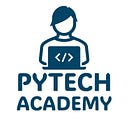Member-only story
Python’s Web Development Landscape: From Django to Streamlit
Python, known for its simplicity and versatility, has an array of web development frameworks that cater to different needs and preferences. In this article, we’ll take an in-depth look at some of the most popular Python web development frameworks, including Streamlit, and compare them across various parameters. By the end, you’ll have a clearer understanding of which framework best suits your project requirements.
Python Web Development Frameworks Overview
1. Django: The Full-Stack Powerhouse
Django is a high-level, full-stack web framework that follows the “batteries-included” philosophy. It includes a powerful ORM (Object-Relational Mapping), an admin panel, authentication, and more. It’s suitable for building complex, data-driven applications like e-commerce platforms, content management systems, and social networks.
2. Flask: Minimalistic and Flexible
Flask is a micro web framework that provides the essentials for building web applications without imposing too many conventions. It’s often described as “unopinionated” and is a great choice for small to medium-sized projects. Developers have the flexibility to choose their own tools and libraries, making it a favorite among those who prefer a more hands-on approach.
